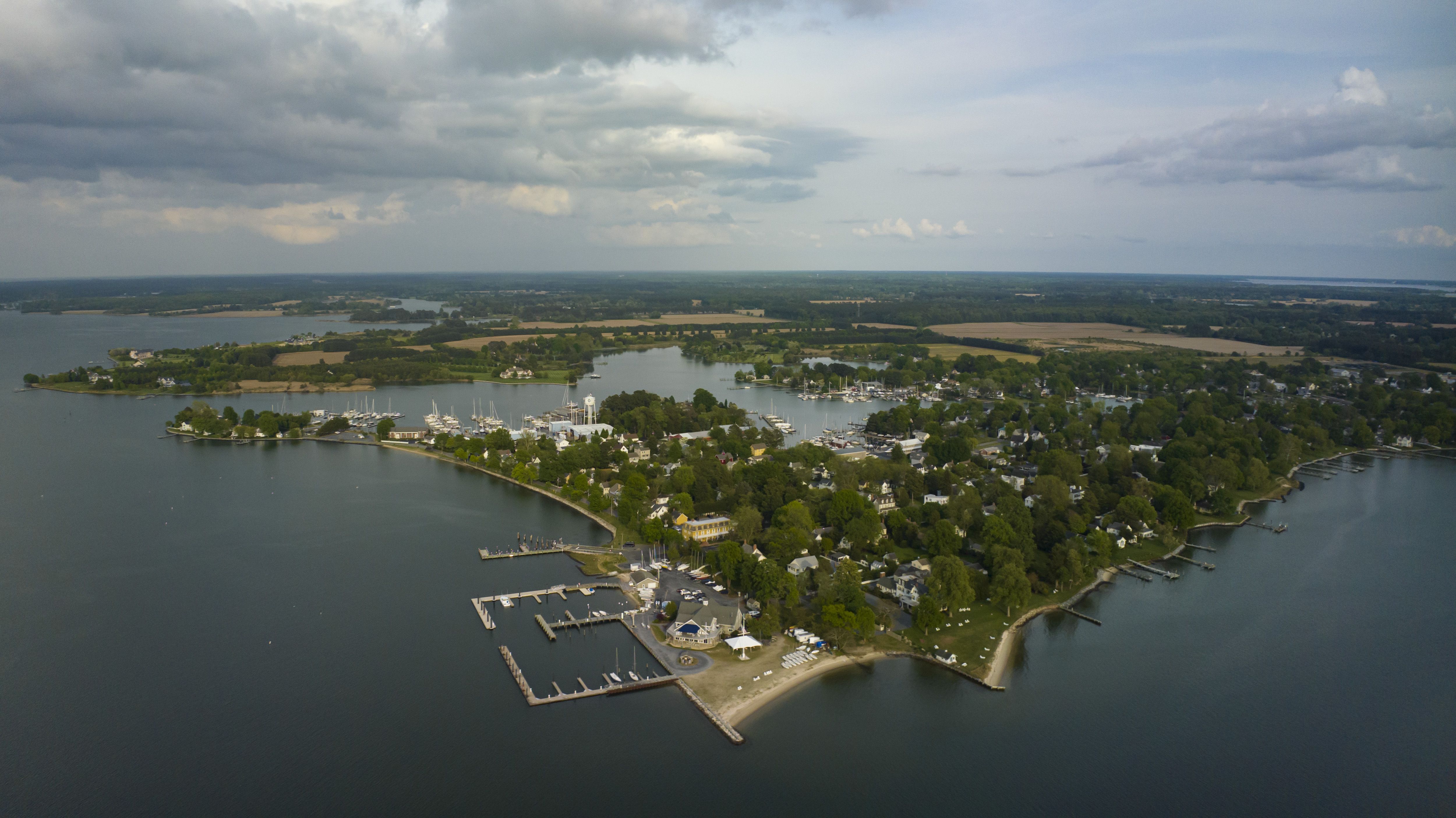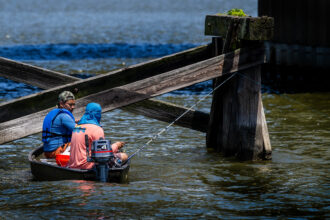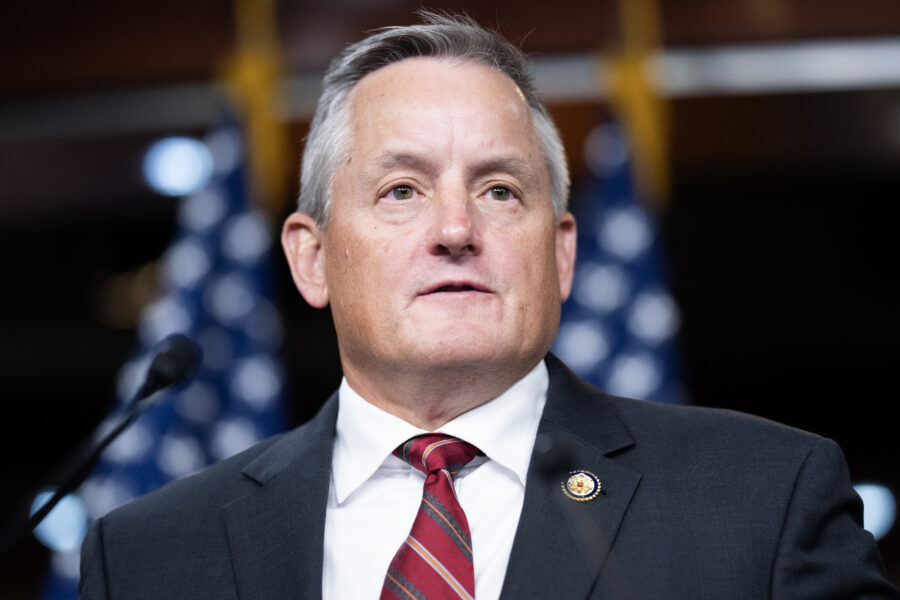The ongoing federal shutdown has eclipsed the final stretch of negotiations on an updated agreement to guide restoration of the Chesapeake Bay, leaving partner states to contemplate a less ambitious pact with scaled-back targets and modest cleanup goals.
Nearly all normally participating federal agencies have been absent from these deliberations since the Oct. 1 shutdown. The Chesapeake Bay Program’s management board met Thursday without that expertise to hammer out a proposal aimed at closing gaps identified by the public after a draft agreement was announced in July.
That draft agreement had drawn the ire of scientists, advocates and citizen groups for weakening legal accountability under the federal Clean Water Act and diluting the enforcement of the bay’s longstanding pollution limits, known as the Total Maximum Daily Load, or TMDL.
The last bay agreement was struck in 2014 by the six partner states—Maryland, Virginia, Pennsylvania, Delaware, New York and West Virginia—along with the District of Columbia, the federal government as represented by the U.S. Environment Protection Agency (EPA) and the Chesapeake Bay Commission.
The new framework proposed in July cut the previous agreement’s 10 goals to four and 31 outcomes to 21. As Inside Climate News reported earlier, pollution targets were left blank, deadlines were pushed back as far as 2040 and oversight timelines were replaced with undefined “X-year” review periods. Several restoration goals were scaled back without explanation.
All that happened before the federal shutdown. But the impact of now largely shuttered agencies was visible during the meeting Thursday, with key federal staff absent and progress on the new bay agreement in question, people familiar with the negotiations told Inside Climate News.
Among the agencies whose participation was cut short by the shutdown are the U.S. Fish and Wildlife Service, the National Oceanic and Atmospheric Administration (NOAA), the U.S. Geological Survey and the National Park Service.
Only the EPA was present. The agency acted on behalf of the federal government, but several attendees told Inside Climate News that they felt the lack of the scientific and technical expertise the missing agencies would typically provide in shaping restoration targets.
A vote on the proposed target for waterbird conservation went forward without the input of the Fish and Wildlife Service, while other issues requiring input from the Department of Defense and Army Corps of Engineers were deferred, attendees told Inside Climate News. The EPA cast interim votes representing the federal government, but there was no way to know whether the outcomes would have been different if all partners were at the table.
“We won’t know until the shutdown ends whether decisions taken in their absence align with how all federal agencies would have voted,” Keisha Sedlacek, senior policy director at the Chesapeake Bay Foundation, said in an email. “We do know that Fish and Wildlife Service would have voted in favor of having waterbirds in the agreement, which EPA voted to remove.”
That target, which refers to tracking and protecting bird populations that rely on the Bay’s tidal and non-tidal wetlands, squeaked in with a 5-4 vote.
Gregg Bortz, a spokesperson for the Maryland Department of Natural Resources, acknowledged that “the inability to communicate with many federal agencies as we reach the end of the revision process is less than ideal.”
But he said in a statement that the federal shutdown has caused limited disruption so far because “the vast majority of the progress and discussions, and virtually all of the technical input, occurred prior to the shutdown.”
Also clouding the negotiations were concerns over setting restoration targets that may prove difficult to meet if the Trump administration keeps cutting funding and states’ budgetary constraints persist. Draft revisions on Thursday included lower or unchanged goals for fish passage, wetlands, protected lands and public access, marking a retreat from the previous decade’s progress, several attendees told Inside Climate News.
“It seems like a big part of what’s driving some of the decisions in this agreement is fear.”
— Kristin Reilly, director of the Choose Clean Water Coalition
As the session concluded, some attendees worried that even EPA’s participation could lapse if the shutdown continues, potentially delaying final adoption of the new bay agreement beyond the Oct. 28 target. If the proposal isn’t hammered out soon, the final agreement could get pushed to January, under new executive council leadership.
Kristin Reilly, director of the Choose Clean Water Coalition, said the shutdown and uncertainty surrounding federal funding have produced a cautious, scaled-back bay agreement.
“It seems like a big part of what’s driving some of the decisions in this agreement is fear,” she said. “There’s a fear of not achieving the targets that they set … and that’s reflected in what we’re seeing over the course of several outcomes and targets in the agreement.”
She pointed to wetlands as an example. The proposed target of 3,000 tidal and 3,000 nontidal acres falls below what scientists recommended. She added that while she was glad the waterbird target narrowly survived, “it was disappointing that it came down to such a close vote.”
If the agencies don’t return soon, Reilly warned, some jurisdictions may not feel comfortable moving forward on the agreement.
Sedlacek, the Chesapeake Bay Foundation senior policy director, said it remains unclear how deeply the shutdown will affect the agreement process. “For now,” she said in an email, “the restoration partners remain on track to have a final revised Bay Agreement ready for the Executive Council to approve on December 2. We should know better whether they can finish on time by … October 28.”
She said that while the management board’s latest language on protected lands and wetlands is “stronger than what was in the initial draft,” those goals “still need to be strengthened.”
Jon Mueller, former vice president for litigation at the Chesapeake Bay Foundation, said the absence of key scientific agencies could weaken the integrity and ambition of the agreement.
“My understanding is that some states and, in some cases, EPA, are suggesting the elimination of some of the non-nutrient targets,” he said, referring to goals not directly relevant to nitrogen, phosphorus and sediment reduction, such as outcomes for wetlands and fish. “However, federal agencies like NOAA have federal protection and scientific monitoring obligations and have, in the past, expressed interest in maintaining these targets. … Without their presence, their advocacy for maintaining robust targets will be lost.”
Mueller added that enforcement and permitting oversight, already weakened in recent years, could suffer further under the shutdown. “EPA Region II and III play a significant role in monitoring Clean Water Act point source permitting and enforcement within the bay watershed,” he said. “Even without the shutdown we have seen federal enforcement reduced either because of firings at EPA and DOJ [the Department of Justice] or because those are no longer priorities.”
He added: “Without federal oversight, states with delegated permitting authority—Maryland, Pennsylvania, Virginia, Delaware—are free to operate on their own.”
Bortz, the Maryland Department of Natural Resources spokesman, said the state views the current draft as an important update that reflects scientific progress since the last agreement, even if compromises were inevitable.
“Maryland did not get everything it sought in the current draft of the revised agreement, but neither did any other partner,” Bortz said. “As with any partnership, reasonable compromise is to be expected between six states, the District of Columbia, the federal government, and the Chesapeake Bay Commission working to meet a common goal.”
Asked about the impact of the shutdown to the process, a spokesperson for EPA emailed a brief statement: “EPA always spends according to the law. Congressional Democrats have chosen to shut down the government. If they want to re-open the government, they can choose to do so at any time.”
About This Story
Perhaps you noticed: This story, like all the news we publish, is free to read. That’s because Inside Climate News is a 501c3 nonprofit organization. We do not charge a subscription fee, lock our news behind a paywall, or clutter our website with ads. We make our news on climate and the environment freely available to you and anyone who wants it.
That’s not all. We also share our news for free with scores of other media organizations around the country. Many of them can’t afford to do environmental journalism of their own. We’ve built bureaus from coast to coast to report local stories, collaborate with local newsrooms and co-publish articles so that this vital work is shared as widely as possible.
Two of us launched ICN in 2007. Six years later we earned a Pulitzer Prize for National Reporting, and now we run the oldest and largest dedicated climate newsroom in the nation. We tell the story in all its complexity. We hold polluters accountable. We expose environmental injustice. We debunk misinformation. We scrutinize solutions and inspire action.
Donations from readers like you fund every aspect of what we do. If you don’t already, will you support our ongoing work, our reporting on the biggest crisis facing our planet, and help us reach even more readers in more places?
Please take a moment to make a tax-deductible donation. Every one of them makes a difference.
Thank you,













